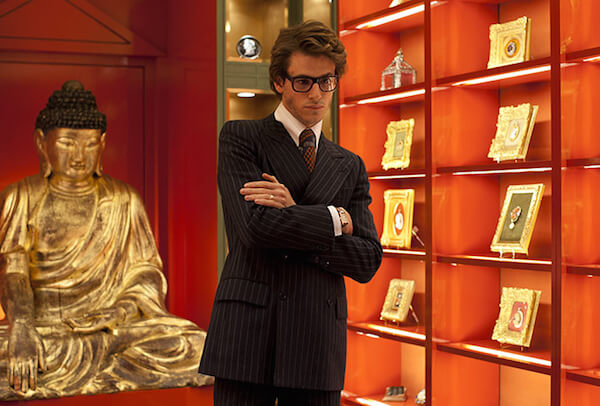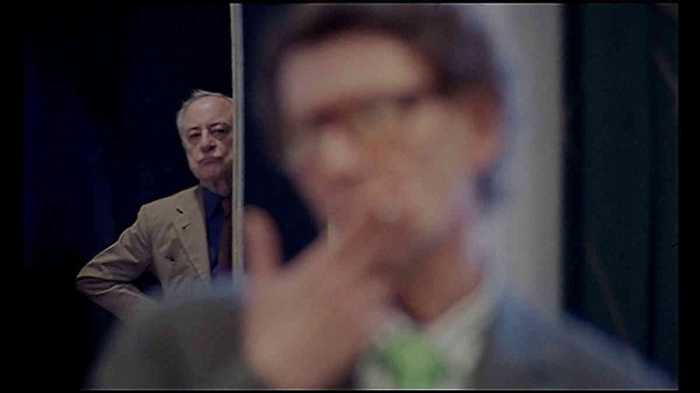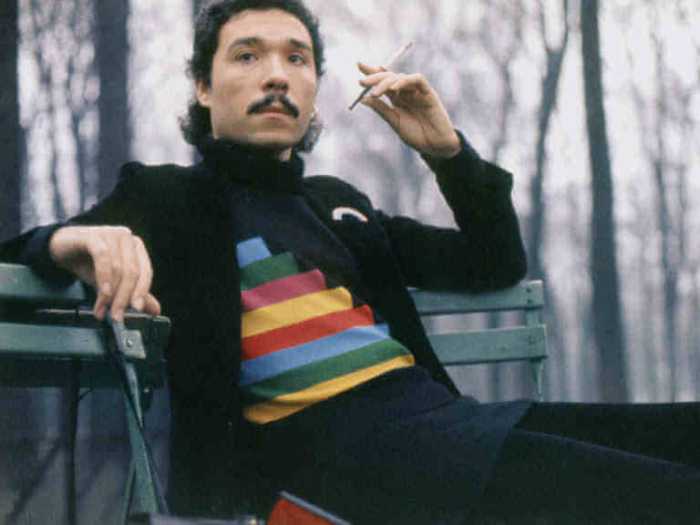Gaspard Ulliel in the title role of Bertrand Bonello “Saint Laurent.” | SONY PICTURES CLASSICS
BY GARY M. KRAMER | The second feature film about Yves Saint Laurent in as many years, “Saint Laurent” is not a hagiography. Rather than present the trendsetting fashion designer’s life from childhood to death (as Jalil Lespert’s uneven film “Yves Saint Laurent” did last year), director and co-writer Betrand Bonello’s biopic focuses mainly on the period of the late 1960s and early 1970s, when Saint Laurent (Gaspard Ulliel) was at the height of his fame. The film toggles back and forth in time, creating more of a patchwork than a proper biography. The narrative approach dilutes the drama in Saint Laurent’s life, emphasizing a lush, velvety mood over plot.
“Saint Laurent” is best when Bonello immerses viewers in specific episodes in his subject’s life. An early scene in the designer’s atelier where his seamstresses are fitting clothes is sublime, capturing both the detail of the work and the genius of Saint Laurent’s style.
And a pair of scenes set in discothèques where Saint Laurent spots and desires the model Betty Catroux (Aymeline Valade) or flirts with the dangerously sexy Jacques de Bascher (Louis Garrel) are terrific. Slowly panning back and forth between the two men across a crowded dance floor, Bonello raises the erotic frisson between them.
Bertrand Bonello captures the mood of Yves Saint Laurent, if not his heart
Even a scene where Pierre Bergé (Jérémie Renier), Saint Laurent’s partner in work and life, has a business meeting with an American executive (Brady Corbet) percolates with drama.
Too much of “Saint Laurent,” however, is style, with no substance attached. Moments where Saint Laurent talks about his influences — Marlene Dietrich, Mondrian, and Marrakesh — or mentions having youth, beauty, and wealth fall flat, delivering little illumination about him. We see Saint Laurent’s lavish lifestyle, replete with objets d’art he and Bergé collect, but these symbols of decadence — from plates to a giant Buddha and to dogs — come off as empty and meaningless. We learn more about his character in watching Saint Laurent read a letter from Andy Warhol and in a scene of reporters discussing his obituary.
The clothes, of course, are fabulous. Arguably the best scene in the film is a fitting Saint Laurent has with a client, Mme. Duzer (Valeria Bruni Tedeschi). As she wears a suit he designed, he slowly makes her more beautiful, changing her belt, taking her hair down, and molding her to the outfit. The runway scenes are also fantastic, and Bonello creates multiple panels — like a Mondrian painting— to present the fashion show from different angles. The music, a mix of pop tunes from the era, is effective in recalling the feel of those years while also commenting on the action.
Clocking in at 150 minutes, “Saint Laurent” is too long not to be a more thorough investigation of his life. Much of the film is given over to Saint Laurent losing his grip on reality, something his mother (Dominique Sanda) observes and is also conveyed in magical-realist scenes where he sees snakes in his bed.
Bergé moves out when Saint Laurent, in a state of hallucination, almost kills him. However, because we’ve seen so little of them together — one curious sex scene, but otherwise little affection or even conversation — the break-up’s drama has little impact.
Instead, it is Saint Laurent’s affair with Jacques de Bascher — with decadent moments at a sex party and where the men share pills with each other and, inadvertently, Saint Laurent’s dog Moujik, as well — that generates the real heat here.
Otherwise, the film includes many scenes that misfire. The moments when a model and a nude woman are discussing Saint Laurent provide an intriguing tease, but in the end go nowhere. In the film’s final third, we see Saint Laurent in 1989 (here played by Helmut Berger), but the action is out of sync with what goes before. Even as Saint Laurent struggles with the anxiety and torment of having to create a new, exciting fashion line over and over again, the sequence offers no poignancy to engage viewers.
All of which is a shame, given the outstanding performance Bonello coaxes out of Ulliel. The actor, a spokesmodel for the fragrance Bleu de Chanel, channels Saint Laurent convincingly as he drinks in the sight of a model while dressing her. Ulliel conveys Saint Laurent’s despair well, but also shows his playful side, as when he creates his famous nude photograph used in an advertisement.
Jérémie Renier is underutilized as Pierre Bergé, but Louis Garrel makes a very striking impression as Jacques de Bascher. Garrel is so seductive and captivating, in fact, that the film loses momentum when his character disappears from the story.
“Saint Laurent” is boldly glossy, but it is also erratic. At moments, Bonello captures the designer’s spirit, but we never discover his soul.
SAINT LAURENT | Directed by Bertrand Bonello | Sony Pictures Classics | In French with English subtitles | Opens May 8 | Film Society of Lincoln Center, 165 W. 65th St.; filmlinc.com | Angelika Film Center, 18 W. Houston St. at Mercer St.; angelikafilmcenter.com/nyc




































